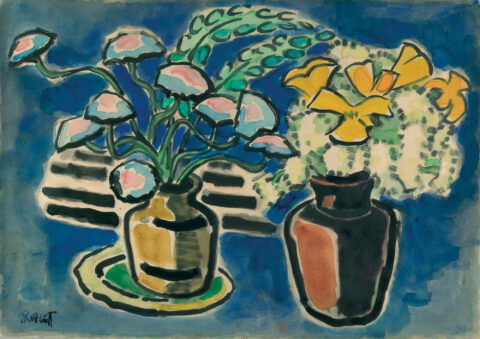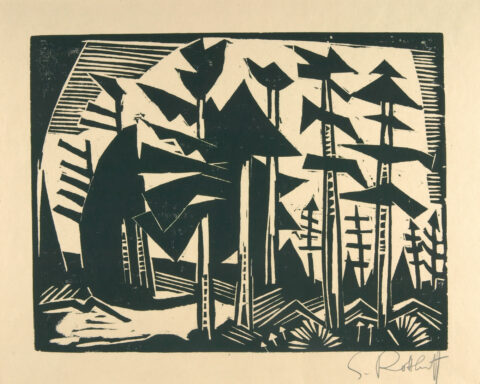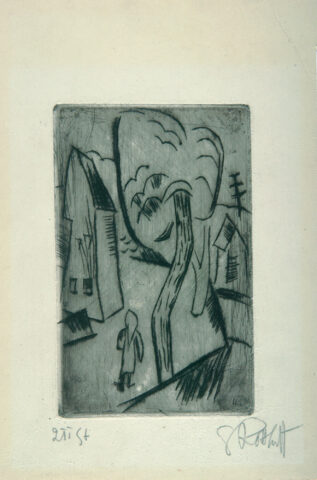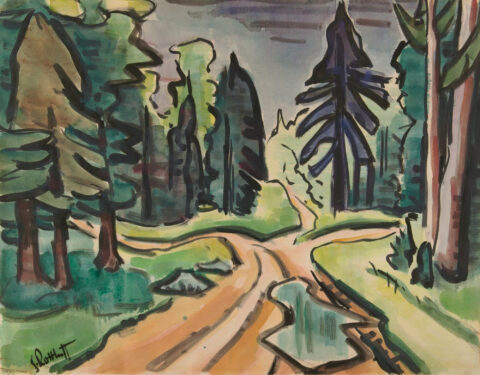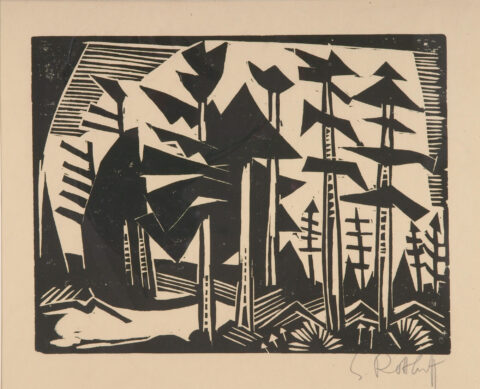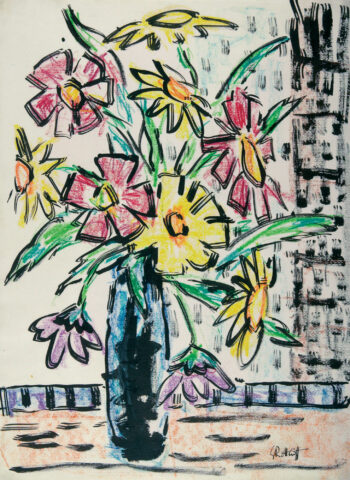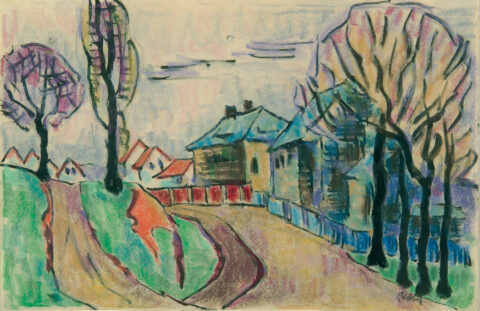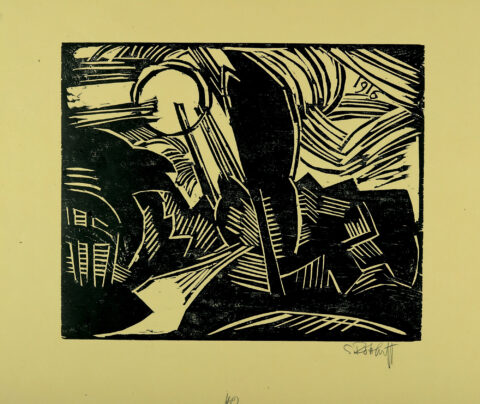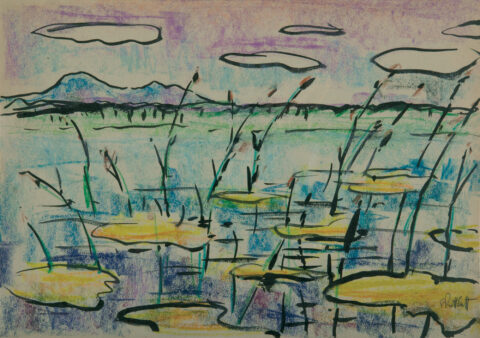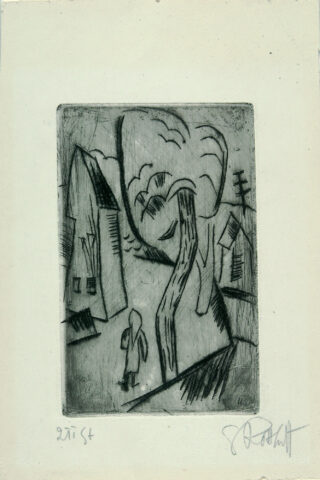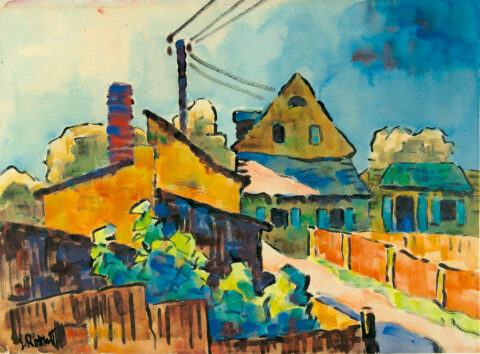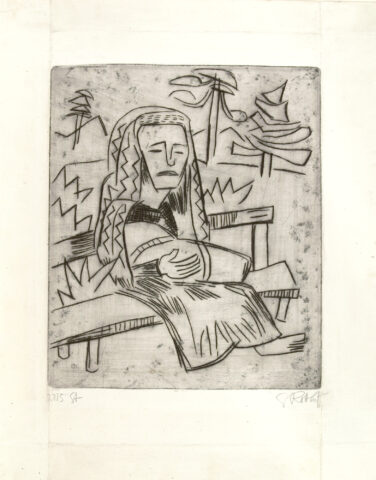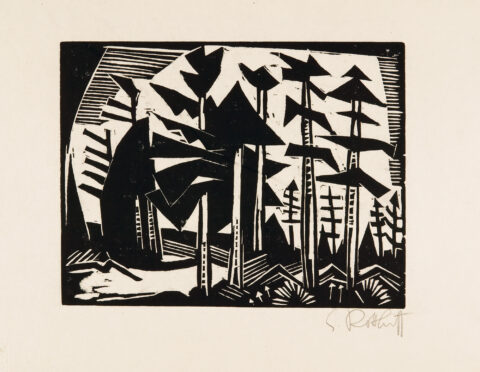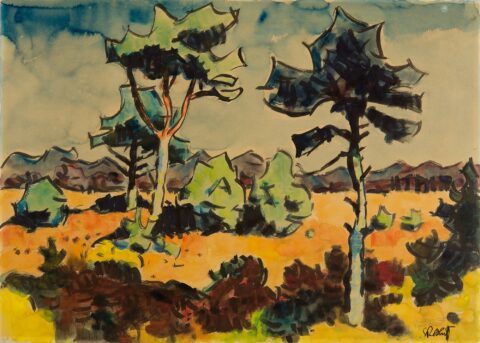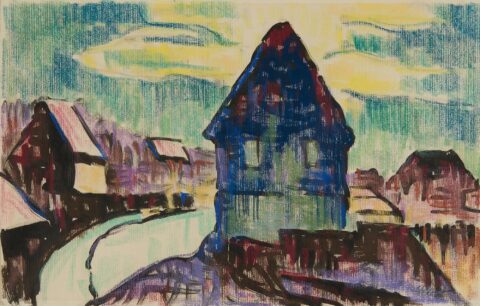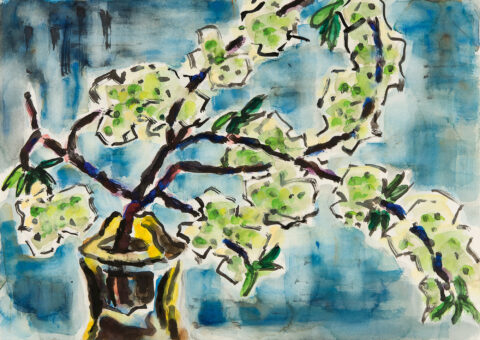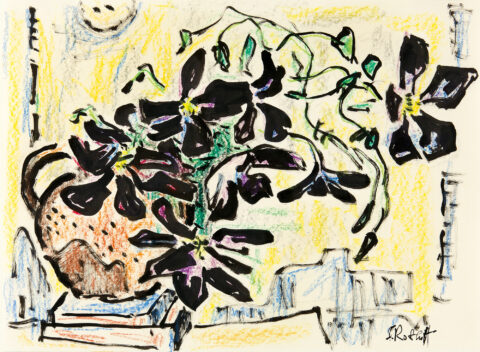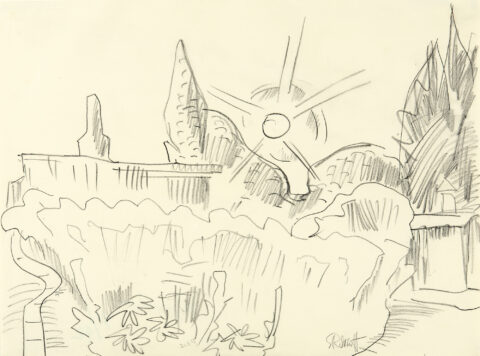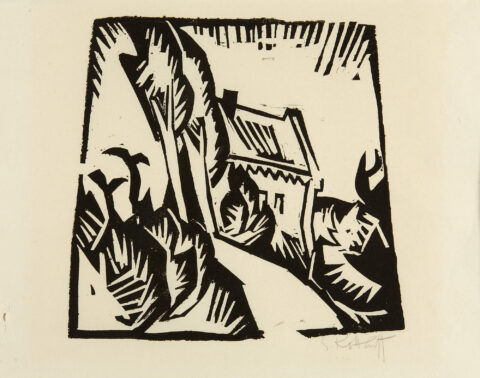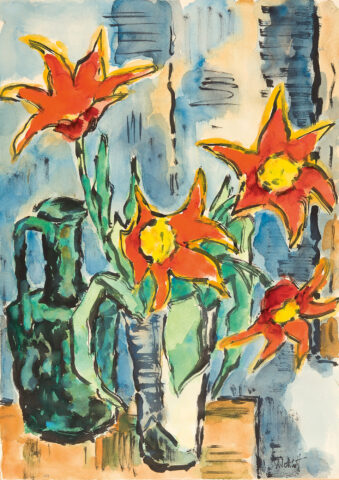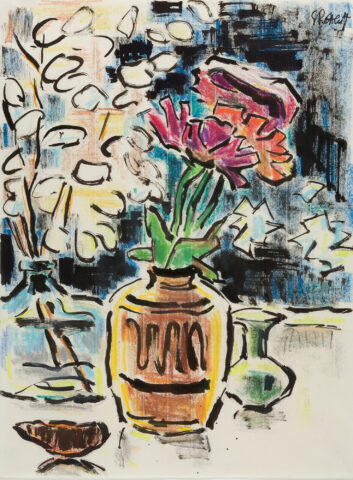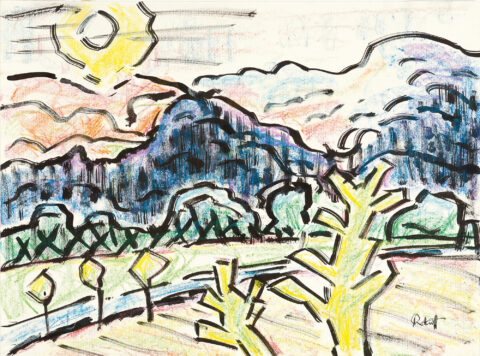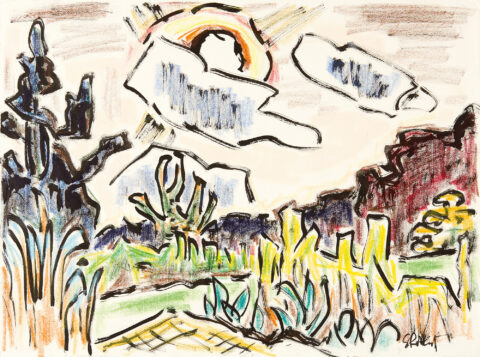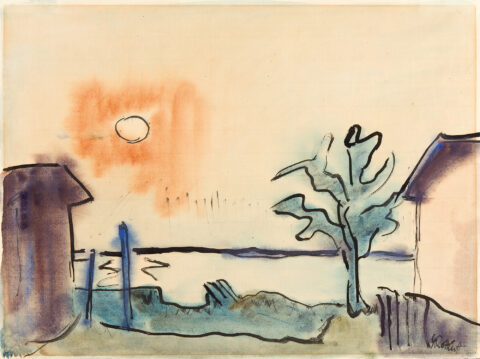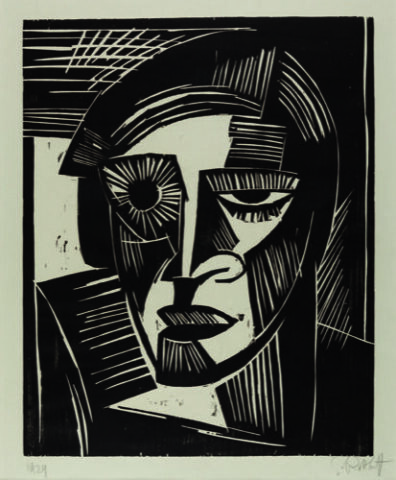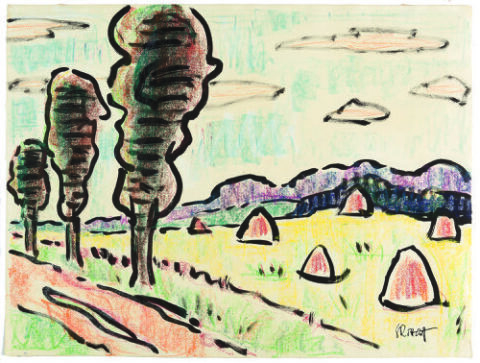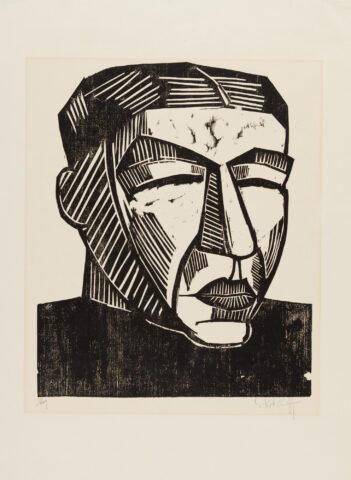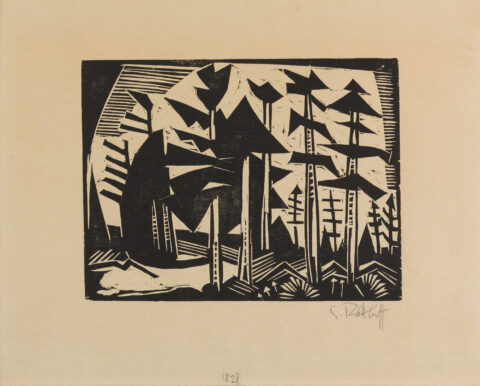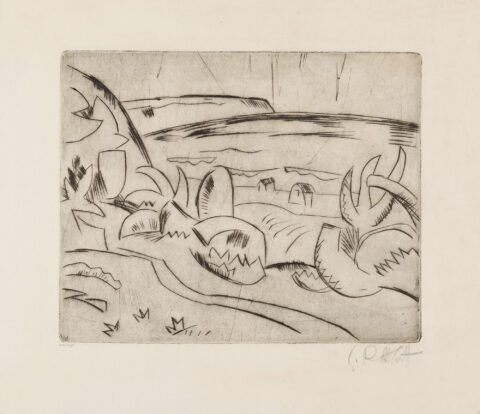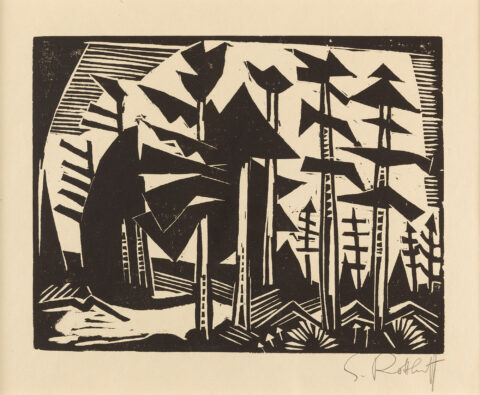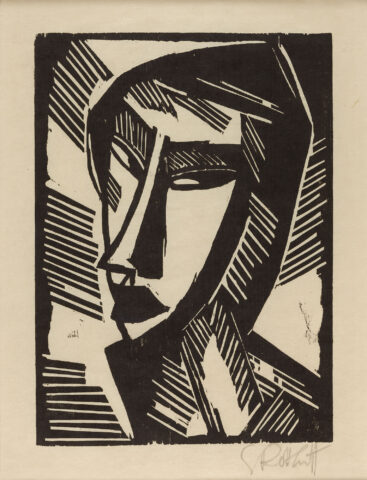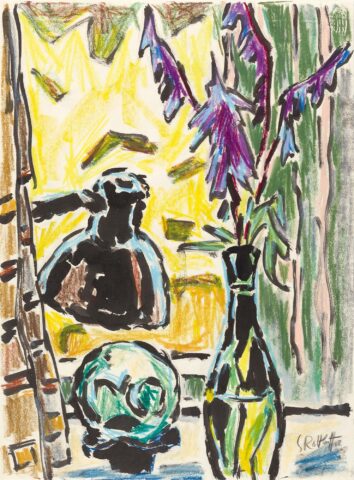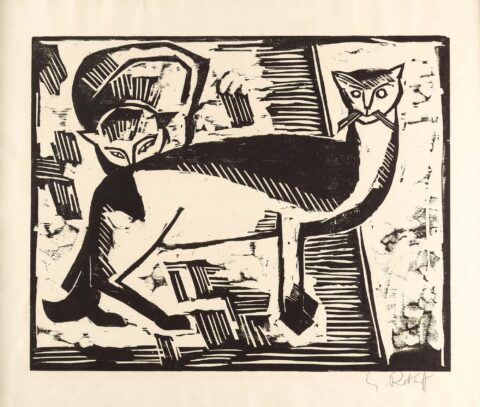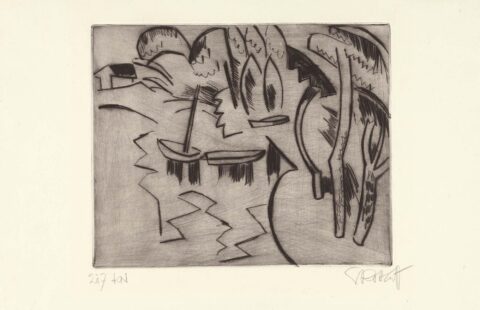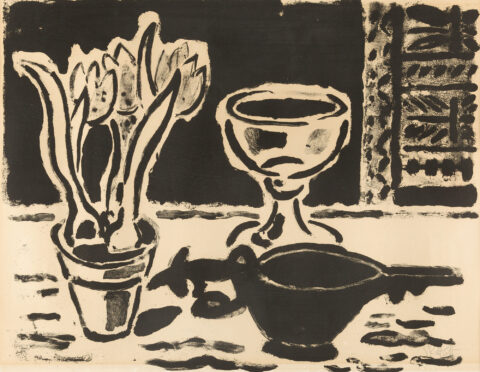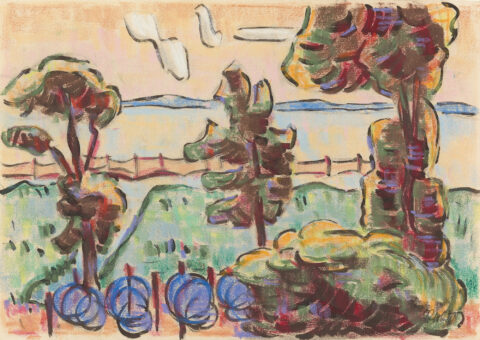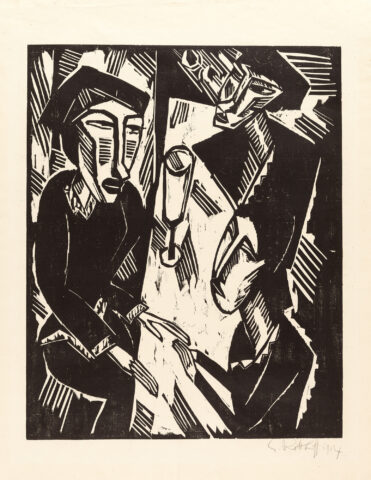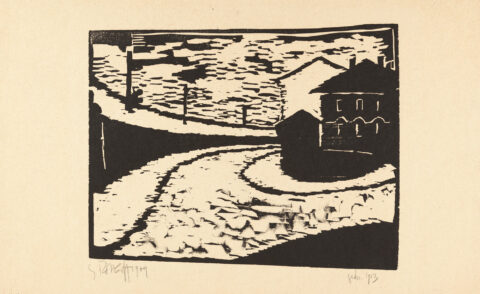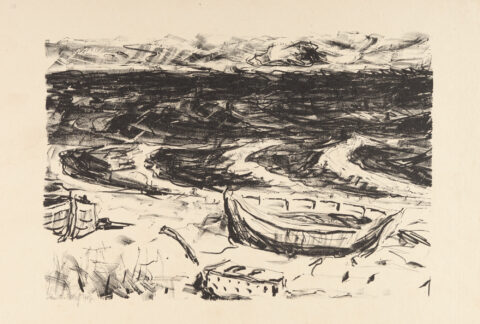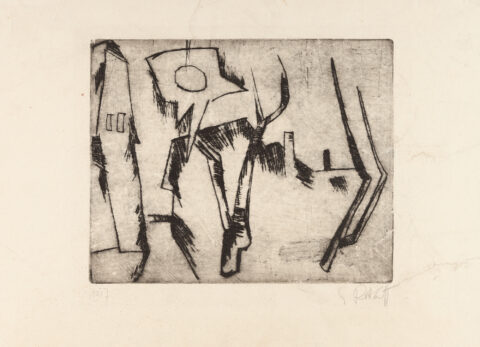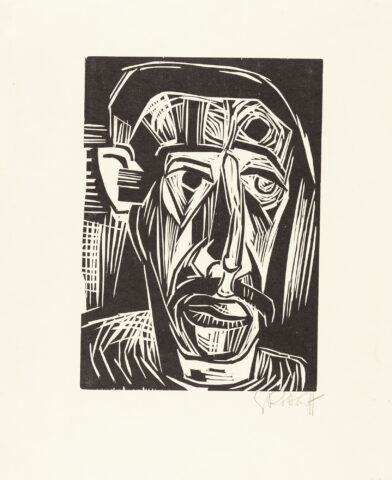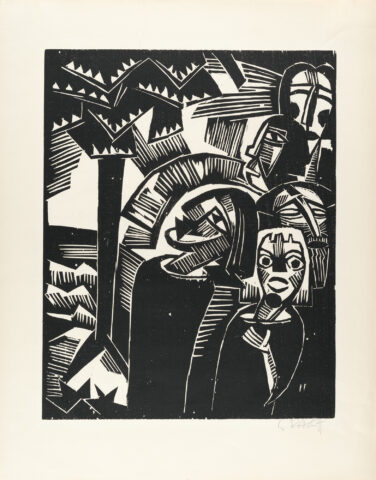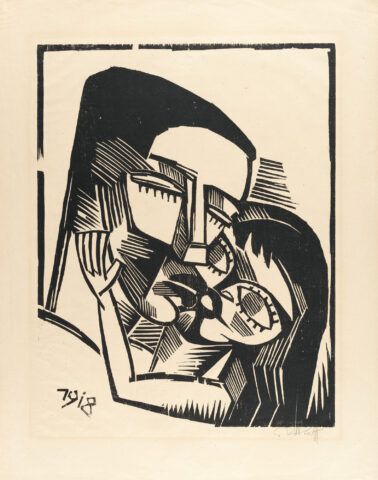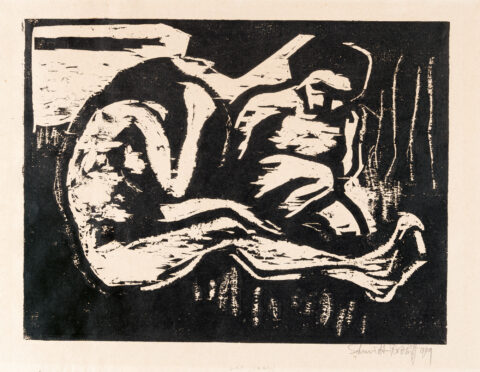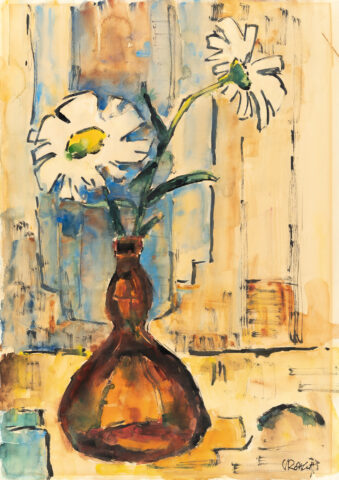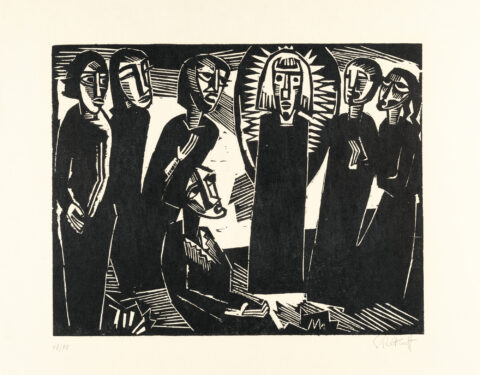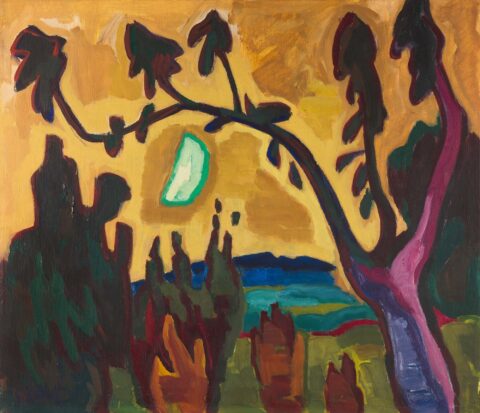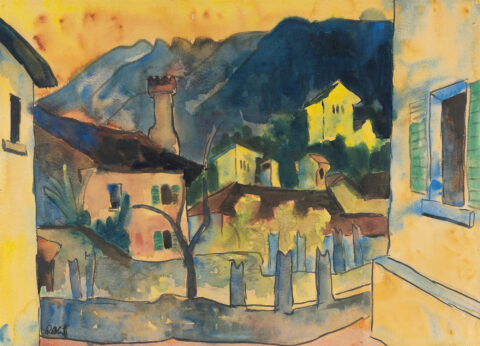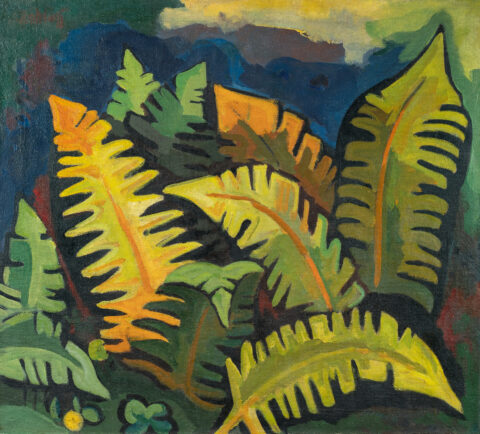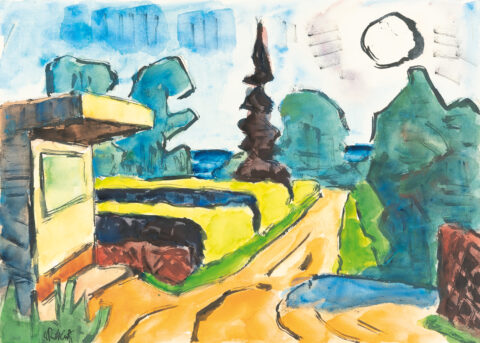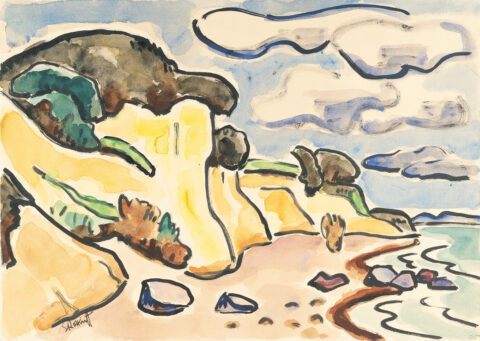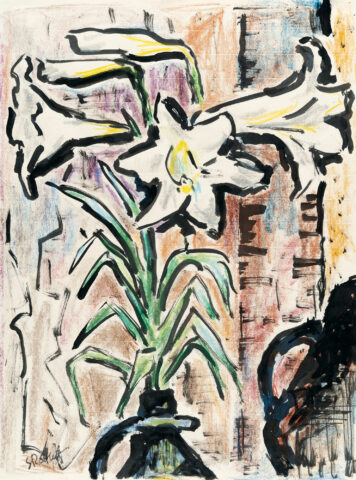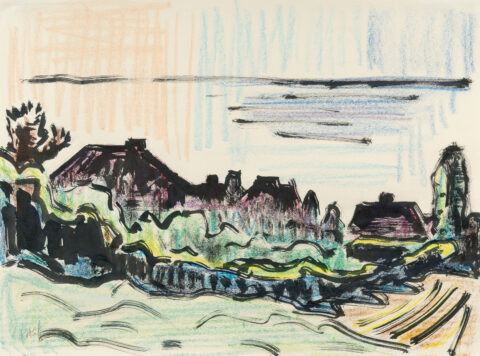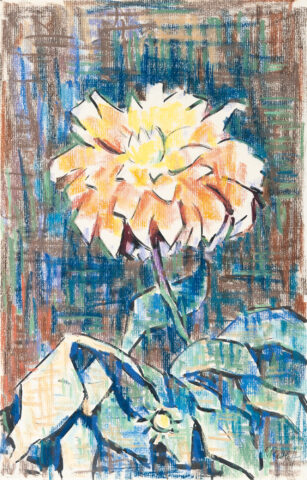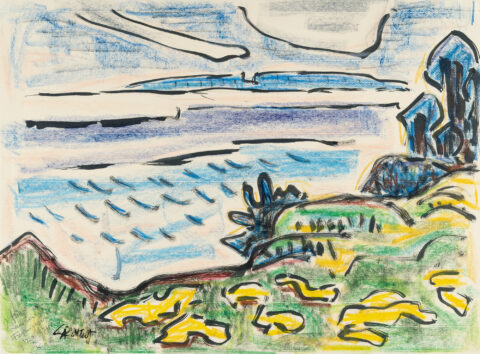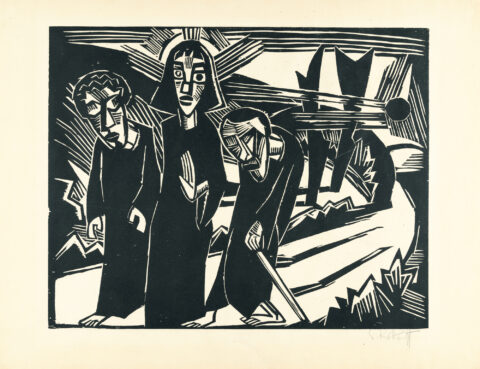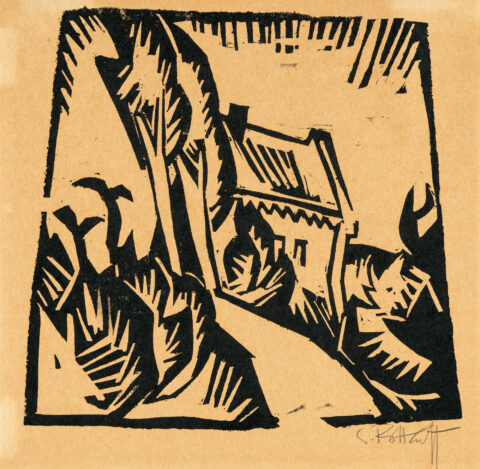Karl Schmidt-Rottluff
Karl Schmidt-Rottluff was born Karl Schmidt in Rottluff near Chemnitz in 1884 and only gave himself the name Rottluff in 1905. He was one of the most important representatives of German Expressionism. In 1905 Schmidt-Rottluff began to study architecture at the Technical University in Dresden. In June of the same year, together with Erich Heckel, Fritz Bleyl and Ernst Ludwig Kirchner, he founded the artists’ group “Brücke”. The group’s first exhibition is held in Leipzig in November. The Hamburg art historian Rosa Schapire joins as a passive member in 1907 and Schmidt-Rottluff will paint several portraits of her in the following years. After Pechstein’s exhibition activities at the “Berliner Secession” in 1912 led to his exclusion from his companions, the “Brücke” disbanded in 1913. In 1910 Pechstein had already taken part in the exhibitions of the New Secession in Berlin and in 1912 in the second exhibition of the „Blaue Reiter“ (Blue Rider) in Munich as well as in the Sonderbund exhibition in Cologne. In 1911 the painter moved from Dresden to Berlin. In 1914 Schmidt-Rottluff became a member of the Berlin Free Secession and was able to present his first solo exhibition. During the First World War he is deployed as an armoured soldier in Lithuania and Russia from 1915 to 1918. After the war he married Emy Frisch in 1919. From 1931 he was a member of the Prussian Academy of Arts but left it only two years later. After the National Socialists came to power, his works were confiscated and partly destroyed in 1937. This finally led to a ban on painting in 1941. As a result, Schmidt-Rottluff withdrew more and more. Only in 1942 does a small rebellion make itself felt, when Schmidt-Rottluff produces several landscape paintings at Kreislau Castle despite the painting ban. After the Second World War he was appointed professor at the University of Fine Arts in Berlin-Charlottenburg in 1947 and in 1950 was elected second chairman of the re-founded German Artists’Association. In 1955 he took part in documenta 1 in Kassel. Due to the ideology of the GDR leadership at the time, his works were hardly ever purchased from the end of the 1940s onwards and few exhibitions of his work were held until 1982. After his retirement in 1954, the artist regularly stayed in Hofheim, on Lake Maggiore and at the Baltic Sea. In 1964, on the occasion of his 80th birthday, he proposes a Brücke Museum in Berlin, which opens on 15 September 1967. In addition to works by Erich Heckel, among others, more than 300 works by Karl Schmidt-Rottluff are kept there. In his hometown, almost 500 works are kept in the Chemnitz Art Collections. His wife Emy and he die in 1975 and 1976 within a few months of each other then in West Berlin, where they have lived since 1947. Schmidt-Rottluff is buried in the Waldfriedhof Dahlem. The artist receives many honours, such as the Villa-Romana Prize in 1929, the appointment as honorary citizen of the city of Chemnitz in 1946, the Order Pour le Mérite in 1956 and the Lovis-Corinth Prize in 1974. In 1995, a 300-penny special postage stamp was issued with the motif “Gutshof in Dangast”. His works are present in many national and international collections and bear witness to his unrestrained creativity into old age.


